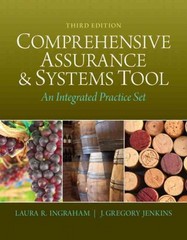PROBLEM 10-23 Basic Variance Analysis [LO2 2, L03 2, L042 ] VitalAid Inc. manufactures a vacuum-sealed high-protein food supplement that it sells to food aid organizations around the world. The company uses variable costing in conjunction with a standard costing system and has established the following standards for one package of VitalAid bars: Standard Standard Standard Quantity or Hours Price or Rate Cost Direct materials 350 grams $12.00 per kg $4.20 Direct labour 0.25 hours $13.00 per hour $3.25 Variable manufacturing overhead 0.25 hours $1.60 per hour $0.40 Total standard variable cost $7.85 During October, the company recorded the following activity relative to production of VitalAid: a. The company produced 4,000 packages during October. b. A total of 1,800 kilograms of material was purchased at a cost of $19,800. c. There was no beginning inventory of materials; however, at the end of the month, 300 kilograms of material remained in ending inventory. d. The company employs 5 people to work on the production of VitalAid. During October, each employee worked an average of 185 hours at an average rate of $14.00 per hour. e. Variable manufacturing overhead is assigned to VitalAid on the basis of direct labour-hours. Variable manufacturing overhead costs during October totalled $1,850. The company's management is anxious to determine the efficiency of the VitalAid production activities. Required: Page 431 1. a. Compute the price and quantity variances for direct materials used in the production of VitalAid. b. The materials were purchased from a new supplier who is anxious to enter into a long-term purchase contract. Would you recommend that the company sign the contract? Explain. 2. a. Compute the rate and efficiency variances for labour employed in the production of VitalAid. b. In the past, the 5 people employed in the production of VitalAid consisted of 3 senior workers and 2 assistants. During October, the company experimented with 4 senior workers and 1 assistant. Would you recommend that the new labour mix be continued? Explain. 3. Compute the variable overhead spending and efficiency variances. What relationship can you see between this efficiency variance and the labour efficiency variance







